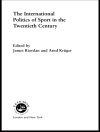In 1872, a young archaeologist at the British Museum made a tremendous discovery. While he was working his way through a Mesopotamian ‘slush pile’, George Smith, a self-taught expert in ancient languages, happened upon a Babylonian version of Noah’s Flood. His research suggested this ‘Deluge Tablet’ pre-dated the writing of Genesis by a millennium or more. Smith went on to translate what later became The Epic of Gilgamesh, perhaps the oldest and most complete work of literature from any culture.
Against the backdrop of innovative readings of a range of paintings, novels, histories and photographs (by figures like Dickens, Eliot, James, Dyce, Turner, Macaulay and Carlyle), this book demonstrates the Gordian complexity of the Victorians’ relationship with history, while also seeking to highlight the Epic’s role in influencing models of time in late-Victorian geology.
Discovering Gilgamesh will be of interest to readers, students and researchers in literary studies, Victorian studies, history, intellectual history, art history and archaeology.
表中的内容
Part I – Gilgamesh
Introduction
1. Discovering Gilgamesh
Part II – Narrative and the historical sublime
2. Capturing time: the iconography of water in painting and photography
3. Forgetting the past and the future: Macaulay, Carlyle, and the ‘shoreless chaos’ of history
4. Present endings: rethinking closure in the Victorian novel
Part III – Geology, Gilgamesh, and the historical sublime
5. Conclusion: Gilgamesh and the resublimation of deep time
Select bibliography
Index
关于作者
Vybarr Cregan-Reid is Lecturer in Nineteenth-Century Literature at the University of Kent












